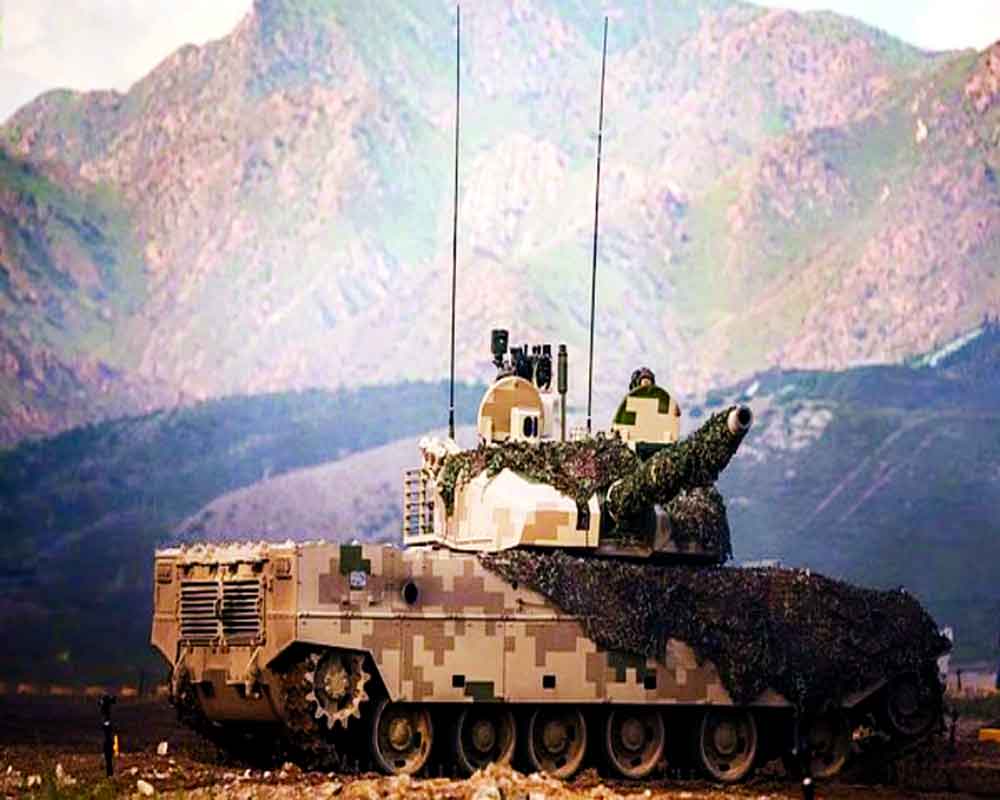Tank Zorawar is expected to dominate the proceedings of war with its fleet-footedness, adaptability and instinct for battle on punishing high altitudes
Legendary (and sadly unsung) Dogra General, Zorawar Singh, is arguably the boldest, noblest and most successful Indian warrior whose unparalleled conquests entailed far-flung regions of Ladakh, Baltistan, Skardu and even areas up to Western Tibet (Ngari Khorsum). Military historians who realise the audacity and incredibility of his valour refer to him as ‘Napoleon of India’. History is rife with heroics of horse-mounted Dogra cavaliers, who were especially effective in mountain warfare at unforgiving heights of what is current-day Chinese territory. Unbeknownst to most Indian citizenry, the name ‘Zorawar’ struck fear in those distant lands and indeed there was a fearless and dashing Indian General who conquered large tracts of lands that are today in the control of either the Chinese or the Pakistanis. Recognising the surreal spirit of Zorawar, the local Tibetans built a Chorten (cenotaph) calling it “Singh ba Chorten” (Cenotaph of the ‘Singh Warrior’).
Today, Zorawar’s forts silently dot the rugged and unforgiving heights of the region. His gallant Dogra clan celebrate his memory with statues of a horse-born Zorawar wielding a sword in the Duggar land (Dogra region of Jammu & Kashmir, Himachal Pradesh, and parts of Punjab). Zorawar’s proud progeny bear his bust with pride and josh in Regiments like the Dogra Regiment and the direct inheritors of J&K State Forces i.e., Jammu & Kashmir Rifles.
With time, the territories that Zorawar’s legendary horsemen conquered were lost to the proverbial ‘other’ and the evolution of time ensured that the dynamics of warfare changed too. Soon, the metaled battle tanks became the new horse, in terms of daring spirit, mechanized efficacy and fine lineage. Horse cavalry gave way to the Armoured Corps. The advent of the Twentieth Century saw the tanks make their roaring entry with decisive roles with the likes of fabled Panzer divisions of the German Army. While Panzer then itself was a relatively light tank (25 tons), the platform of tanks soon became deadlier, larger and more powerful, and therefore decidedly heavier with the likes of T-90 (48 tons), M1A2 (63 tons), Leopard (67 tons) to our very own Arjun MK 1-A (69 tons).
Even though the French-built AMX light tanks (17 tons) acquitted themselves with great utility and efficacy against the Chinese forces in the Chushul sector, preventing the Chinese advance to Leh – the concept of light tanks soon gave way to more ‘loaded’ heavier tanks. Secondly, the morphing of Pakistan as the ‘enemy number one’ in sovereign imagination and the consequential impact of thinking shifted the tank territories to the deserts of Rajasthan or the plains of Punjab and Jammu region necessitating import, manufacture, or development of tanks like T-54/T-55, T-62, T-72 and later the Arjun. After multiple hitches and improvements, the Arjun was ultimately believed to have fared well when equated to T-92 – but it also became suspect for certain roads, bridges, and canals along the Pakistan border, given its weight. To deploy the same in the higher reaches of battlegrounds once conquered by Zorawar’s cavalry was impossible.
Recent years have seen a clear revision of the primary enemy and the same is now China, with the bloody face-offs happening in the Summer of 2020. Eerily, much of the tense Sino-Indian theatre is the same as the one that was once ably dominated by the band of Zorawar’s Dogra Army. Criticalities of war preparedness and its starting deficiencies threw up the issue of tanks and mechanized elements in the said region – the Chinese had tellingly deployed their purpose tanks (Type 15 light tanks) to boost their offensive capacities for high-altitude warfare. The relative ease of transportability, deployment, mobility and operability in mountain environs (along with technological advancements like being ‘informationised’ with other platforms) adds to the overall formidability of force. The heavier Indian tank armoury other than weight and accompanying transportability and mobility issues were not intended to operate in such regions with rarefied air, high-altitude terrain and -40 degrees Celsius conditions.
Therefore a Request for Information (RFI) for light tanks to meet the looming Chinese threat states, “new generation combat vehicle platform, approximately 350 Light Tanks in a phased manner, along with performance-based logistics, niche technologies, engineering support package, and other maintenance and training requirements…” was importantly issued in 2021 towards fast-tracked development.
This urgency bore expression in ‘Zorawar’, a lightweight tank (25-ton, air transportable with amphibious capabilities) jointly made by the Defence Research and Development Organisation (DRDO) along with a private company, Larsen & Toubro (L&T). It is expected to meet the requisite and critical power-to-weight ratios, as indeed other competitive parameters of communication (e.g., integration with drones), firepower, artificial intelligence, surveillance, protection et al, to outmatch the Chinese T-15. Essentially the sacred spirit of ‘Zorawar’ comes back to the region, albeit, in the form of a light tank for ‘trials’ before the final induction of the initial batch of 59 tanks.
The tank ‘Zorawar’ is not a replacement for the heavier tank, but only to complement the existing armoured tanks. Like its nomenclature predecessor and legendary warrior, this ‘Zorawar’ too is expected to dominate the proceedings of war with its fleet-footedness, adaptability, and instinct for battle in the punishing high altitudes.
(The writer, a military veteran, is a former Lt Governor of Andaman & Nicobar Islands and Puducherry. The views expressed are personal)


























